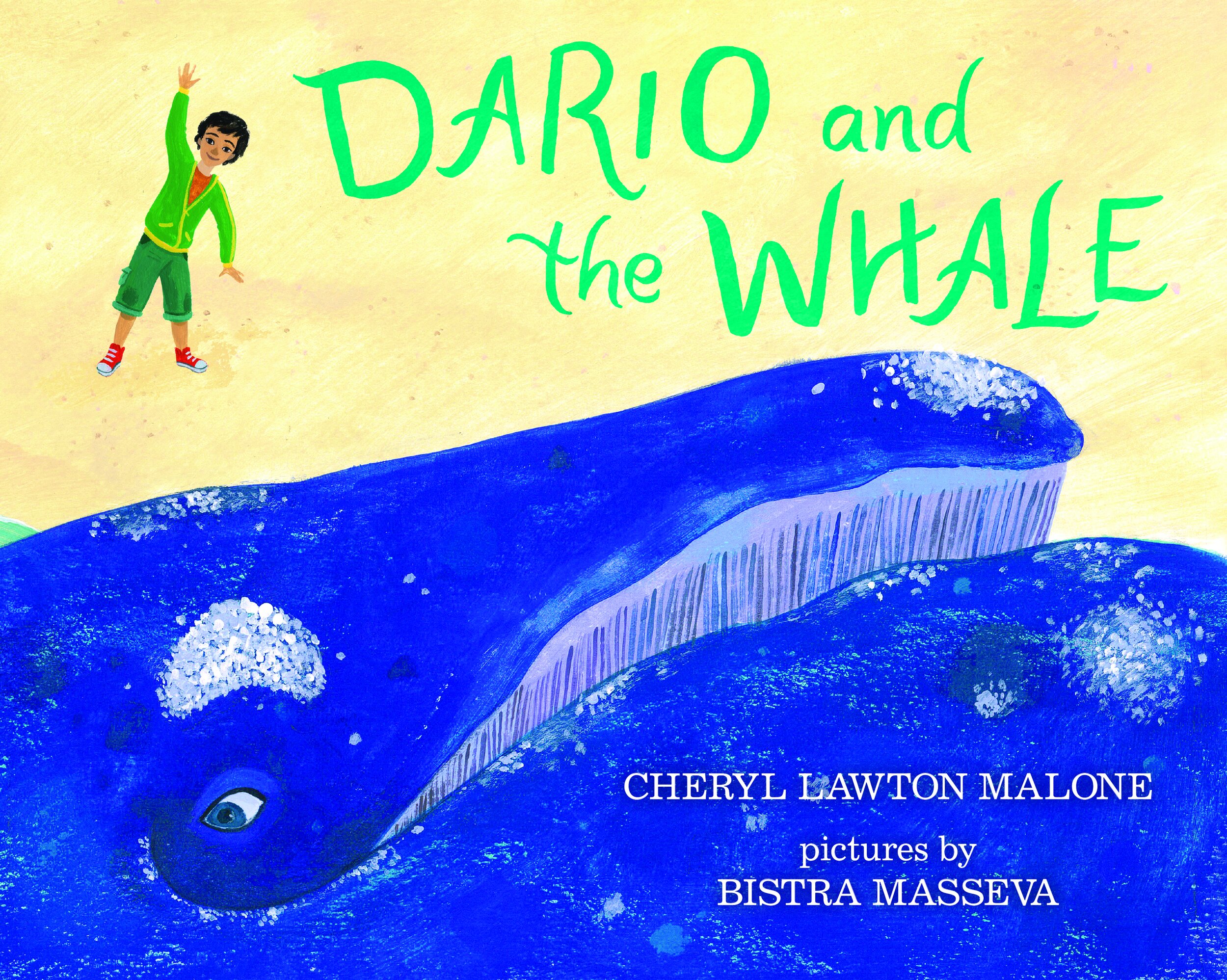
Dario and the Whale
Great Reads from Great Places 2021
About the Story
Every spring, a Brazilian boy named Dario and his mother move to Cape Cod so she can work. Meanwhile, a right whale calf and his mother swim to the cool shallow cape to find food.
One day Dario and the young whale see each other across the water. Before long, they watch for one another every day. When Dario waves, the whale breaches — and when Dario whistles, the whale spouts.
But when it’s time for the whales to migrate, will Dario lose the first friend he’s made on Cape Cod?
— from the book jacket of Dario and the Whale
Source: Whale & Dolphin Conservation
Dario’s whale is inspired by a North Atlantic right whale, which is the rarest of all whale species. North Atlantic right whales migrate from the coasts of Georgia and Florida to Cape Cod every spring, leaving before summer.
Most countries agreed to stop hunting whales in 1986. However, scientists estimate that today only three to four hundred North Atlantic right whales are living in the Atlantic Ocean.
Find out how you can help them and other marine animals by visiting organizations like Whale and Dolphin Conservation.
Discussion Questions
Dario moves with his mother to Cape Cod every spring so she can work. Have you ever been in a situation similar to Dario’s where you’re new to a place or a group and had to make new friends? Was it scary or suprising? Did you feel nervous? Or were you excited? Share what making new friends felt like for you.
What does Dario have in common with his friend, the whale?
Dario greets the kids on the beach: “Oi!” How do you say hello in your native language? Do you say hello to friends in a different way than you greet strangers?
When someone new moves to your community, how do you think you can help them settle in? What are some of the special places you would show them?
Activity
Create your own whale friend. Dario’s whale is a North Atlantic right whale, but maybe your whale is a Fin whale or a Humpback whale or another whale of your choice. Pick a whale from the Whale and Dolphin Conservation’s guide to use as inspiration to create your new friend. Use whatever supplies you would like. Maybe you want to draw your whale with colored pencils or crayons, or pick newspaper scraps and other paper clips and create your whale as a collage. Now you have your own whale friend, just like Dario has his whale!
Source: Whale & Dolphin Conservation
Get to Know: North Atlantic Right Whales
What do they look like? Calves are a blue-gray color. Adults are black or dark gray.
How to tell two whales apart? Each adult right whale has a unique, white pattern that appears as rough skin or bumps on its head and nose, which makes individual whales easy to identify.
What are these bumps? Cyamids, more commonly known as whale lice, form these white areas of rough skin or bumps, which are called callosities.
What do they eat? North Atlantic right whales are baleen whales, which means they filter plankton—microscopic animals and plants floating in the ocean—through huge baleen plates in their mouths. Right whales prefer to skim the sea’s surface for dinner. A right whale would search for food by skimming with its mouth open, using the baleen plates as a strainer to push the seawater out and keep the food (plankton!) inside.
A right whale’s baleen plates are made of something very familiar to humans— keratin! Keratin is a protein found in human hair and fingernails.
Source: Whale & Dolphin Conservation
Meet the Author
Cheryl Lawton Malone is a freelance writer, poet, and MFA grad who teaches at Lesley University and GrubStreet in Boston. She spent her childhood migrating across the great Atlantic to live in places like the Netherlands and the United Kingdom. Now, she, her husband, and two wheaten terriers migrate on weekends to an island in the same ocean, where they enjoy spending time with their favorite animal neighbors. This is her first picture book.





